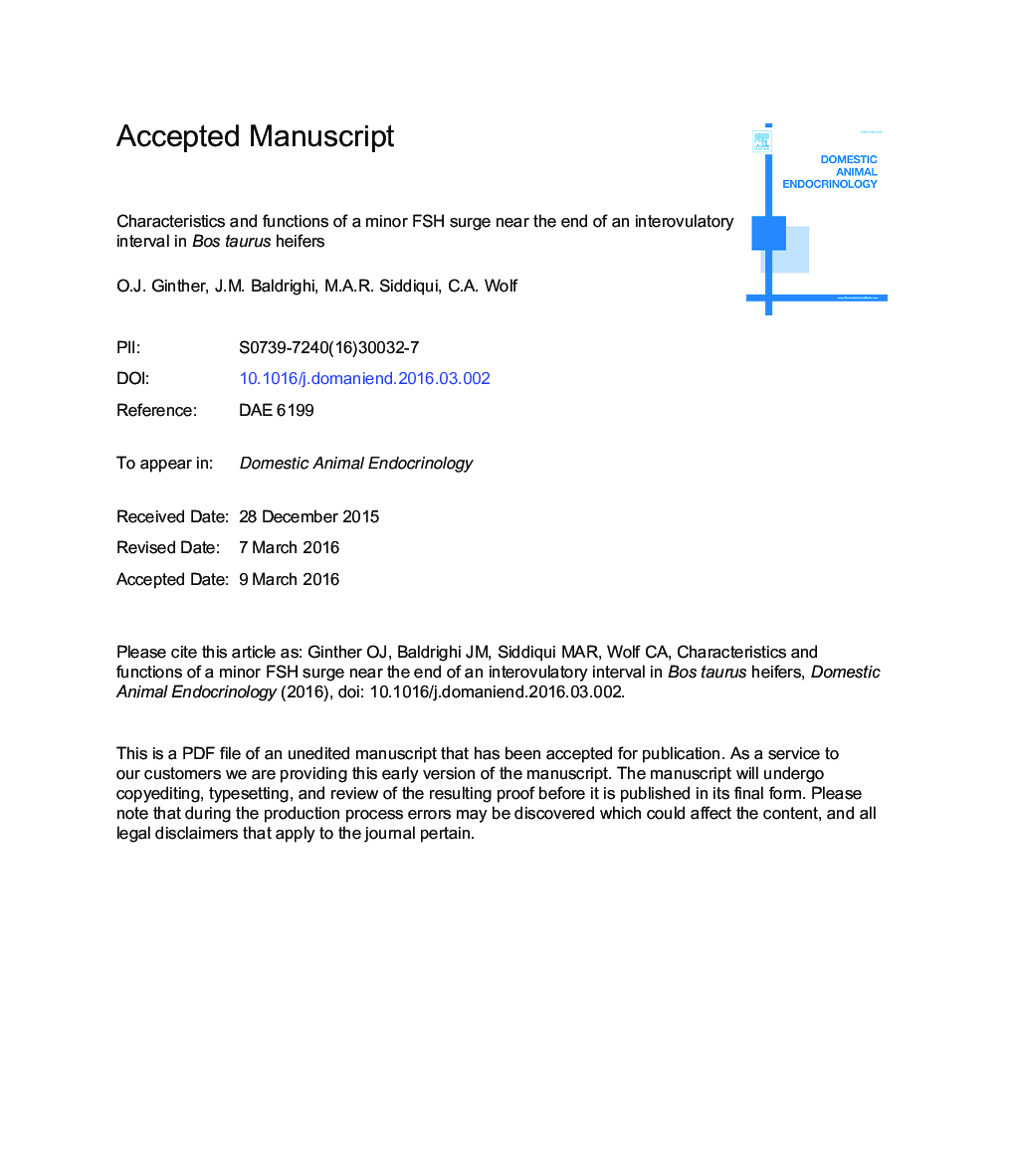| Article ID | Journal | Published Year | Pages | File Type |
|---|---|---|---|---|
| 8482037 | Domestic Animal Endocrinology | 2016 | 28 Pages |
Abstract
The apparent function of a minor FSH surge based on temporality with follicular events was studied in 10 heifers with 2 follicular waves per interovulatory interval. Individual follicles were tracked from their emergence at 2 mm until their outcome was known, and a blood sample was collected for FSH and LH assay every 12 h from day â14 (day 0 = ovulation) to day 4. A minor FSH surge occurred in each heifer (peak, day â4.6 ± 0.2). Concentration of LH increased (P < 0.05) during the FSH increase of the minor surge but did not decrease during the FSH decrease. A minor follicular wave with 8.2 ± 2.0 follicles occurred in 6 of 10 heifers. The maximal diameter (mean, 3.4 ± 0.9 mm) of 77% of the minor-wave follicles occurred in synchrony on day â4.4 ± 0.4. Most (59%) of minor-wave follicles regressed before ovulation and 41% decreased and then increased in diameter (recovered) on day â1.9 ± 0.3 to become part of the subsequent wave 1. A mean of 3.7 ± 0.9 regressing subordinate follicles from wave 2 recovered on the day before or at the peak of the minor FSH surge. The growth rate of the preovulatory follicle decreased (P < 0.02) for 3 d before the peak of the minor FSH surge and then increased (P < 0.03). Concentration of LH increased slightly but significantly temporally with the resurgence in growth rate of the preovulatory follicle. A minor LH surge peaked (P < 0.0002) on day 3 at the expected deviation in growth rates between the future dominant and subordinate follicles. Results indicated on a temporal basis that the recovery of some regressing subordinate follicles of wave 2 was attributable to the minor FSH surge. The hypothesis was supported that some regressing follicles from the minor follicular wave recover to become part of wave 1.
Keywords
Related Topics
Life Sciences
Agricultural and Biological Sciences
Animal Science and Zoology
Authors
O.J. Ginther, J.M. Baldrighi, M.A.R. Siddiqui, C.A. Wolf,
